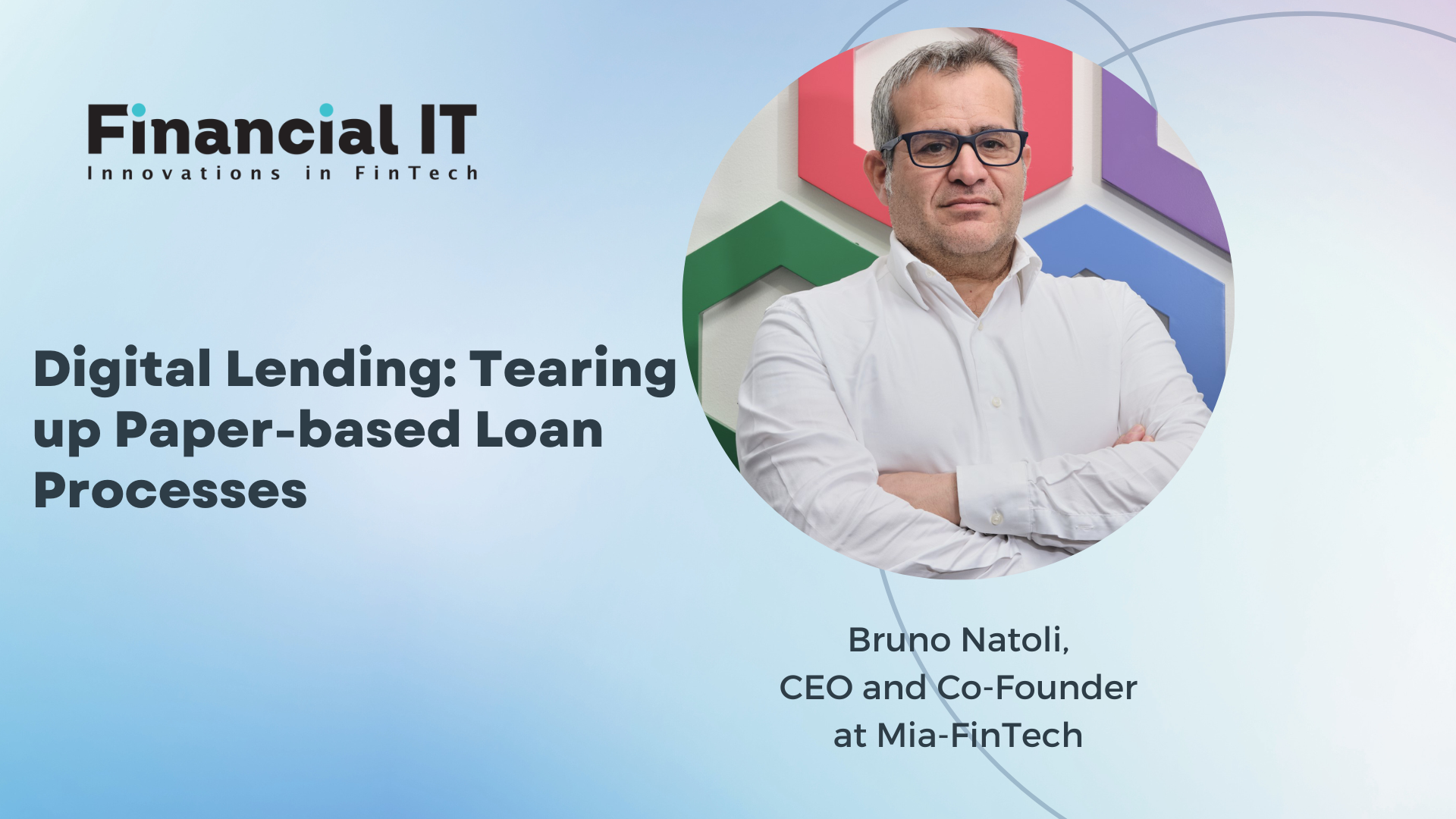Digital Lending: Tearing up Paper-based Loan Processes

- Bruno Natoli, CEO and co-founder at Mia-FinTech
- 22.03.2024 10:45 am #lending #digitalization
The proliferation of fintech firms has revolutionized traditional banking. By combining advanced information technology with financial services, consumers can perform day-to-day transactions with greater efficiency, accessibility, and personalization.
This digital revolution extends across the financial services landscape with one area exposed to tremendous growth. External factors, including a volatile housing market and a cost-of-living crisis, has increased the demand for lending services with consumer borrowing growing by a net £2 billion, the most since March 2017. This has culminated in the expansion of the global Digital Lending Platform market, which according to Research and Markets, was valued at $465.54 million in 2023 and is expected to be worth $894 million by 2028, with a CAGR of 13.9%. This significant increase testifies to the growing adoption of fintech solutions by consumers and businesses.
Why has digital lending become so popular
Digital lending is redefining the current financial landscape, changing the way people access credit and the way loans are disbursed. This approach eliminates many of the complexities and delays associated with traditional lending processes, improving the user experience and simultaneously reducing operating costs for lending companies.
Digital lending forms an integral pillar of the digital banking ecosystem. In its simplest form, digital lending involves the provision of loans through digital platforms and advanced algorithms, expediting the process of requesting, evaluating, and granting loans. The COVID-19 pandemic of 2020-21 accelerated the growth of the digital lending industry with customers being forced to familiarise themselves with mobile banking apps following the temporary closure of local bank branches. After the banks reopened, many opted to continue using mobile banking apps, appreciating their great advantages.
Smart lending
When we speak of digital lending, we speak of ‘smart lending', understood as a digital lending process based on reliable and more accurate data, where each component of the lending flow is autonomous, encouraging modularity and customisation. Smart lending is comprised of the following 4 macro-phases:
- Quotation and simulation – By digitising the product, effective solutions can be made available on the platform in terms of quoting and simulating a loan.
- Digital onboarding – When a potential customer is interested in receiving a loan, he or she must be identified and 'onboarded', i.e. integrated within the digital platform. This process enables the identification and certification of identity. Mia-FinTech, for example, has developed a dedicated component, the Identification Manager, an end-to-end solution that speeds up the entire process of document acquisition and validation, while enabling the creation of customised identification processes and connecting them to different certified Digital Identity providers.
- Credit scoring - In this phase, the reliability and creditworthiness of the potential customer is assessed, which then determines the financing rate. It is a process based on automated systems using statistical methods or models that provide a synthetic score or judgement, thus allowing the risk or reliability of applicants to be assessed quickly and effectively. Here too, Mia-FinTech has created the Scoring Manager application, which allows the customisation of the credit risk assessment process, enabling automated decisions based on accurate and up-to-date data from various sources. This helps companies reduce errors and inefficiency in decision-making processes, improving the overall effectiveness of the approach to credit. In addition, it offers monitoring and customisation tools that allow companies to tailor the process to specific needs, providing greater flexibility and control.
- Document underwriting – The loan request is transmitted to the core banking systems, where the physical operator then takes over.
Afterthought
While traditional loans involve paper-based procedures and in-person meetings, digital loans are fully managed online, saving applicants time and effort, e.g. related to office opening hours. If I apply for a loan online, I can do it anywhere. Digital lending platforms also offer faster and more accessible approval, with automated processes and immediate decisions. This digital transformation not only simplifies the process of obtaining a loan, improving the overall customer experience but also allows the financial institution to reduce costs related to customer service by providing access to all information.



















